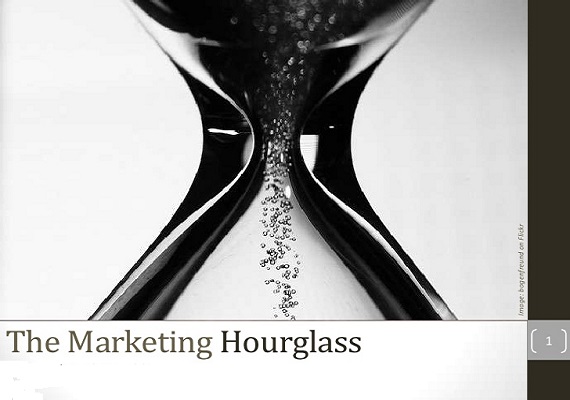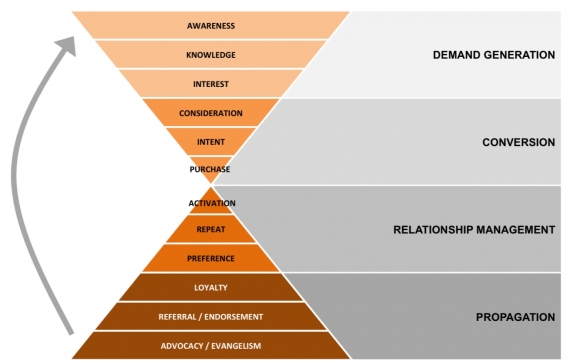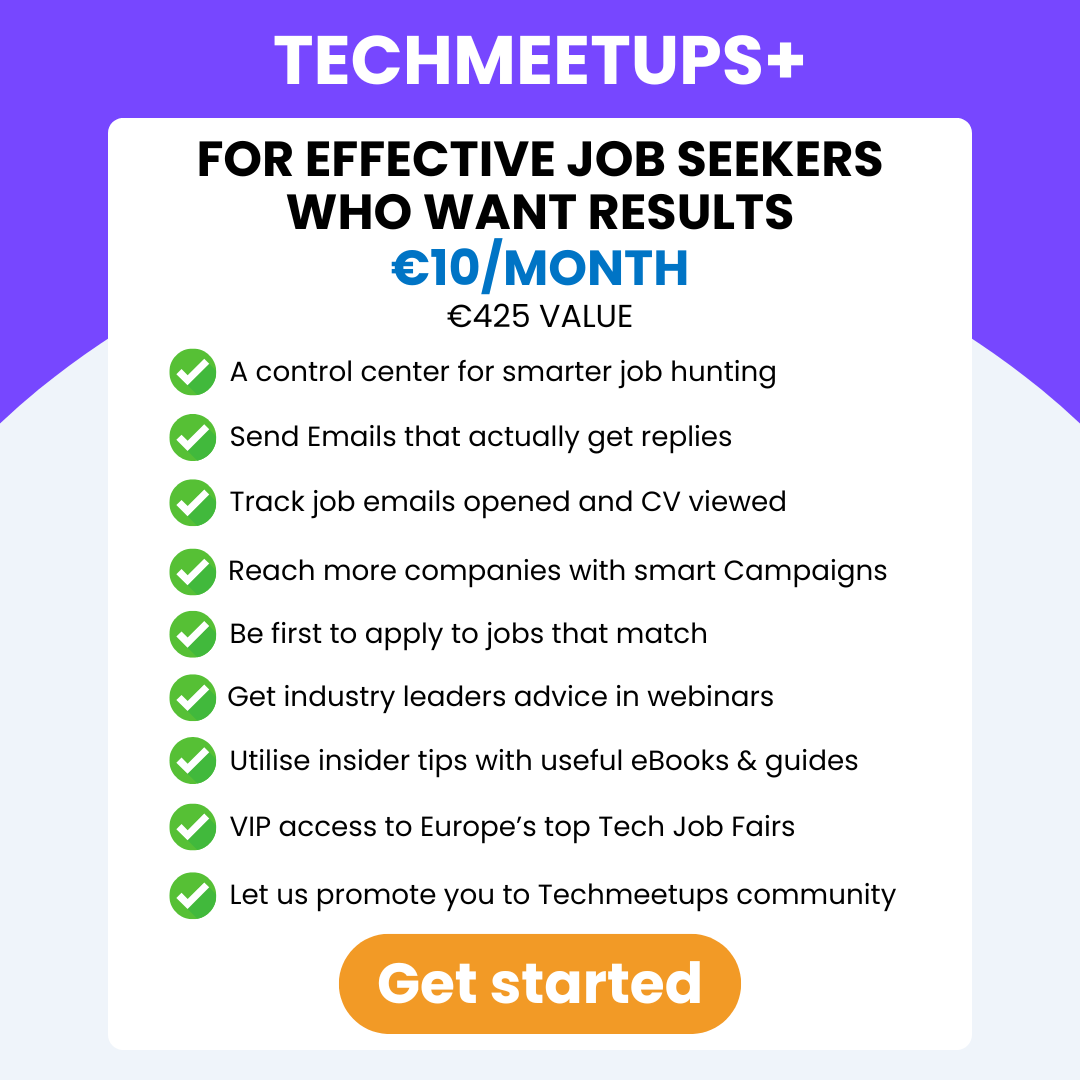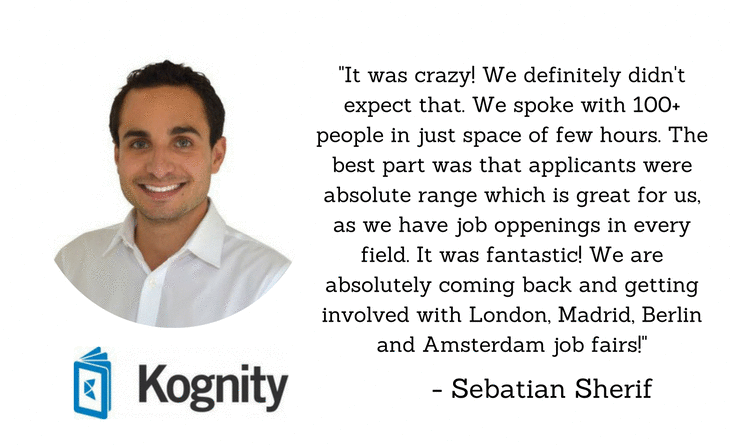By John Webb
John Webb will be presenting at the TechMeetups Guru Program, covering Low Risk, High Reward Marketing & PR for Startups.
The Marketing Funnel, Sales Funnel or Adoption Funnel, as the concept is commonly referred to, is one of the core marketing models used by companies and consultants to outline the progression of potential customers from first contact with a product or brand through ultimately to purchase. It provides a picture of how customers can be segmented into different stages as they move along a journey, directed by marketing, product messaging / triggers, and sales engagement to create the desired action, i.e. making a transaction. However, product adoption can be extended further through consumption and appreciation, to a point where the customer actually ‘markets’ on the brand’s behalf; i.e. they become advocates or evangelists who proactively spread Marketing’s most valuable asset of all: word-of-mouth endorsement. The traditional ‘funnel’ therefore doesn’t illustrate the complete journey of a customer. A ‘Marketing Hourglass’ model would be more appropriate; where the action of purchase / sign-up is merely the central point, and the progression of the customer extends beyond the funnel through additional stages of engagement with the product to ultimately become advocates / evangelists.
The Marketing Hourglass model below defines this progression and provides a concept for how marketers can migrate potential and active customers through their levels of engagement. The benefits for the marketer are to firstly define the characteristics of customers at each level, and then to understand the processes involved in moving between each level. In this respect, marketing strategies and tactics can be developed to ‘manage’ the customer through their journey in order to maximise their experience, value and engagement.
It is also important to consider, however, that the Marketing Hourglass isn’t necessarily a linear progression. The customer doesn’t automatically go from one stage to the next: they may return to prior levels, or jump to subsequent. As marketers we cannot therefore assume that they have fulfilled each stage of the ‘process’ and achieved the respective level of ‘development’. This should be reflected in our communications and tactics, such that each prior stage is reinforced throughout the hourglass. This is also relevant in the contexts of re-targeting and nurture programmes; it is critical to understand and appreciate where a customer is in their journey at any one point; whether they are actively engaged, or removed from the process. In this respect, appropriate marketing streams should be defined based on customer paths and behaviour to channel them as efficiently as possible through the hourglass.







